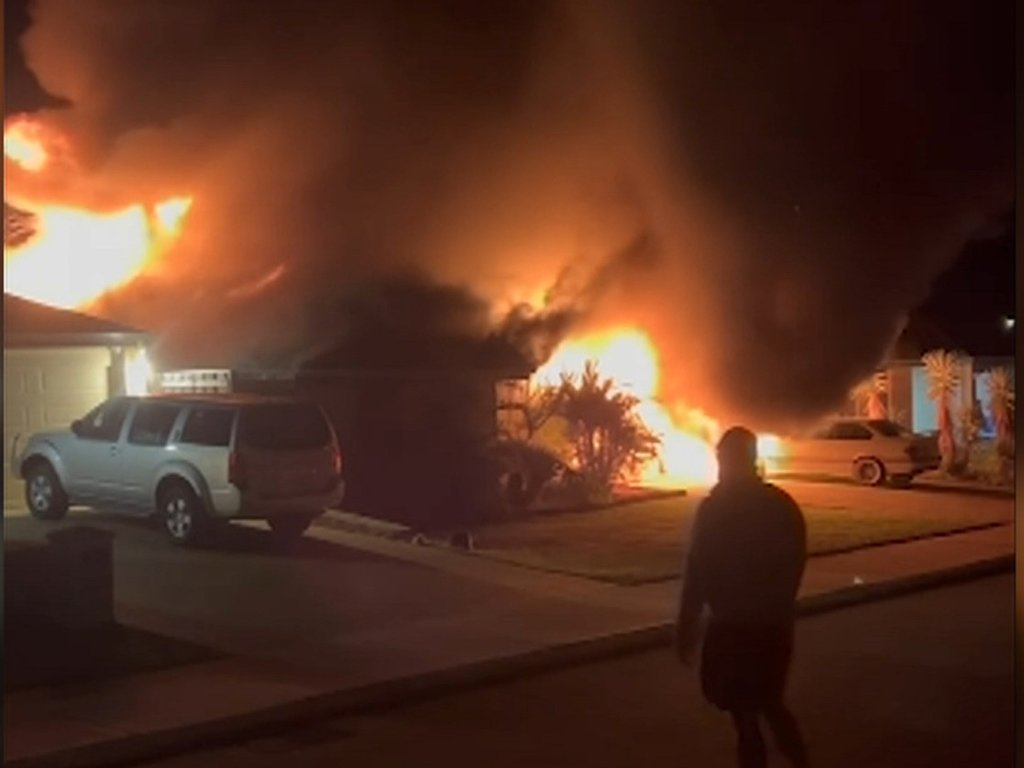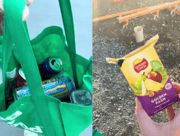
Everyday gadgets we rely on—our phones, toothbrushes and even e-bikes—hide a risk few stop to consider.
When that risk turns real, it doesn’t just cost money, it can take away homes, memories and lives in a matter of minutes.
One Australian couple learned this in the most devastating way when their garage became the ignition point of a firestorm.
For Tracey Howard and Levi Cole-Lau from Ellenbrook, the fire that destroyed their dream home started with a lithium-ion battery on its very first charge.
Eight years of memories turned to ash as their house, and Ms Howard’s beloved home salon, were consumed by flames.
‘It’s more than just a home, everything is here, our memories. We all got out safely, which is the main thing, but we could’ve been minutes away from being the total opposite,’ Ms Howard told shared.
Their ordeal reflected a crisis unfolding across the country as lithium-ion battery fires surged at unprecedented rates.
A crisis spreading nationwide
In Western Australia, 2024 was the worst year on record with 166 fires caused by lithium-ion batteries—nearly one every second day.
These incidents damaged homes, destroyed possessions, caused injuries, and even sparked large-scale bushfires.
New South Wales faced an equally alarming trend, with 272 lithium-ion battery incidents in 2023, marking a 66 per cent jump from 165 in 2022.
Fire and Rescue NSW investigation district officer Mark Hayes described the risk in blunt terms.
'We're having roughly one every two days. We've got evidence of lithium-ion toothbrushes going up, doorbells going up, doesn't matter what it is, if it has lithium in it—the potential for a fire is there.'
Fires striking in unexpected places
South Australia’s Metropolitan Fire Service revealed they had already surpassed a typical year’s worth of battery fire incidents in the first half of 2025 alone.
Callouts in that state had increased almost ten-fold in the past five years, making lithium-ion batteries one of the fastest growing fire threats nationwide.
The danger was made worse by the fact that these batteries didn’t even need to be charging to ignite.
A fire in Perth’s east was sparked by a remote-control toy car that wasn’t plugged in.
Government action and household awareness
For older Australians especially, the idea of multiple devices charging overnight posed an insidious risk.
Once a lithium-ion battery failed, the energy stored inside it was released explosively, creating intense flames, toxic fumes and the possibility of reignition even after the fire was put out.
Recognising the urgency of the crisis, governments had begun enforcing new safety standards.
In NSW, Fair Trading introduced product safety requirements on 1 February 2025 for e-rideables and their batteries and chargers.
Further rules mandating testing, certification and labelling were set to come into effect between August 2025 and February 2026, with non-compliance carrying fines of up to $5,500 per breach.
How to stay safe
For households, awareness was key.
Labels such as lithium ion, li-ion, li-po and lithium-polymer revealed the presence of these batteries in devices ranging from e-scooters to vapes and electric toothbrushes.
Essential safety steps for Australian homes
- Charge large devices like e-bikes outside, never in hallways or near exits
- Use only compatible, compliant chargers from the same manufacturer
- Never build your own batteries or mix different brands
- Monitor charging times and disconnect once fully charged
- Store batteries in cool, dry places away from direct sunlight
- Install smoke alarms where devices are charged
- Never put lithium-ion batteries in household bins
The Australian Competition and Consumer Commission (ACCC) had received 231 product safety reports involving lithium-ion batteries in the past five years.
One Australian had died, while 23 recalls affecting 89,000 products underscored the scope of the problem.
Insurance provided some relief for Tracey and Levi, but the devastation of losing irreplaceable personal items was harder to repair.
What to do if disaster strikes
The advice for those facing such a fire was simple—call 000 and evacuate immediately.
Lithium-ion battery fires could reignite days later, release highly toxic gases, and were not easily extinguished with water.
‘You can replace furniture and houses but you can’t replace a life,’ Mr Cole-Lau said as he urged others to heed the warning.
The ACCC reminded Australians that the crisis required joint responsibility from government, industry and everyday consumers.
What This Means For You
Lithium-ion battery fires have surged across every state, with WA and NSW recording record numbers that continue to rise. What makes this risk so concerning is that even the smallest household items—like electric toothbrushes or children’s toys—can spark a fire capable of destroying a home.
Governments have recognised the urgency of the issue, introducing new safety regulations from February 2025 to ensure safer products on the market. But while these measures help, the most important protection starts at home, with families urged to follow strict charging and storage precautions to reduce risks.
For everyday Australians, especially those who rely on multiple devices or have grandchildren using e-rideables, being aware of these dangers isn’t just about safeguarding property—it’s about protecting the people you love most.
The dangers of lithium-ion batteries don’t stop at phones and toothbrushes—one of the biggest concerns right now comes from e-bikes, which have been linked to a growing number of house fires.
Authorities have already started cracking down on unsafe models after repeated incidents showed just how devastating these fires can be.
If you want to understand what steps are being taken to keep households safe, this next story offers a closer look at the issue.
Read more: There’s a crackdown on dodgy e-bikes as battery fires surge—here’s what you need to know
Firefighters Battle Growing Lithium Battery Crisis — Fire and Rescue statistics reveal people are four times more likely to be injured in lithium-ion battery fires, with NSW seeing a 66 per cent spike in incidents in 2023.
https://blog.storemasta.com.au/firefighters-battle-growing-lithium-battery-crisis
Commissioner's Blog: Sounding the alarm on the dangers of lithium-ion batteries—Consumer Protection—LGIRS — WA recorded 166 lithium-ion battery fires in 2024, the worst year on record, with officials warning these batteries don’t even need to be charging to ignite.
https://www.consumerprotection.wa.g...he-alarm-the-dangers-of-lithium-ion-batteries
Lithium-ion battery fire spike sparks new campaign | Consumer and Business Services — South Australia’s MFS reported more battery fires in the first half of 2025 than in typical full years, with callouts increasing nearly ten-fold over five years.
https://www.cbs.sa.gov.au/news/lithium-ion-battery-fire-spike-sparks-new-campaign
Lithium-ion battery safety campaign kit—Fire and Rescue NSW — Authorities highlight lithium-ion batteries as NSW’s fastest growing fire risk, capable of releasing explosions, toxic fumes, and reigniting after flames are extinguished.
https://www.fire.nsw.gov.au/page.php?id=9432
Lithium-ion battery fires increase in NSW, prompting FRNSW warning — New safety standards for e-rideables and lithium-powered devices took effect in 2025, with penalties of up to $5,500 per breach for non-compliance.
https://internationalfireandsafetyj...ires-increase-in-nsw-prompting-frnsw-warning/
Consumers urged to use and store lithium-ion batteries safely to prevent deadly fires | ACCC — The ACCC reported 231 product safety cases and one death linked to lithium-ion battery fires, stressing that government, industry, and households must act together.
https://www.accc.gov.au/media-relea...-ion-batteries-safely-to-prevent-deadly-fires
How will you protect your family from the rising risk of lithium-ion battery fires in your home?







